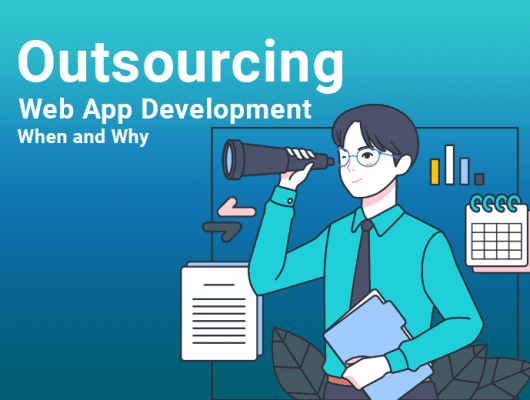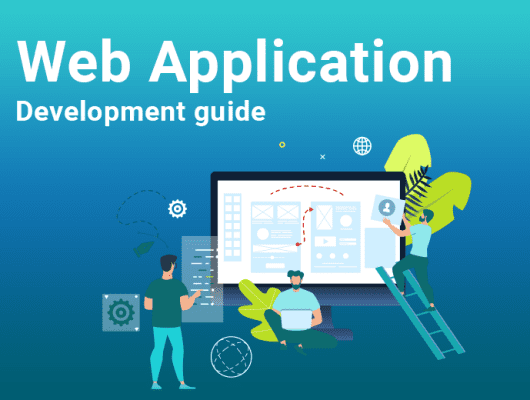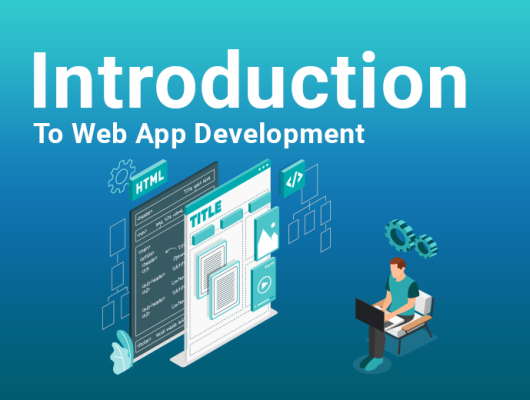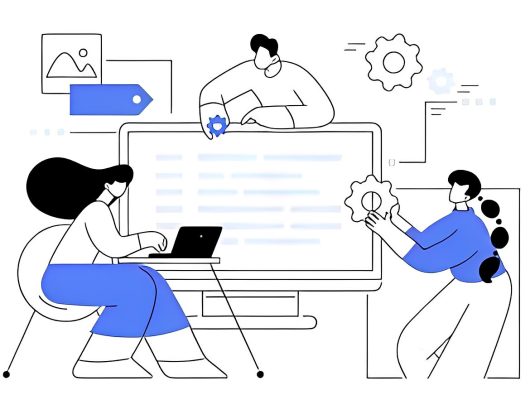
Choosing the Right Technology Stack for Web App Development
Not surprisingly, many firms prefer to develop web applications, which are less expensive and more accessible than mobile apps.
Decision-makers usually prioritize less complicated aspects such as UI/UX design, product pricing, and marketing strategy. However, the tech stack for the web is another critical component to your product’s success.
For this, there is always a need to understand the subject properly. Therefore, if you are looking for the appropriate answer of the right technological stack, then this guide is for you.
Stay with us till the end of this article, and get to know the right technology for your web app development.
Table of Contents
Understanding Web App Development Stack
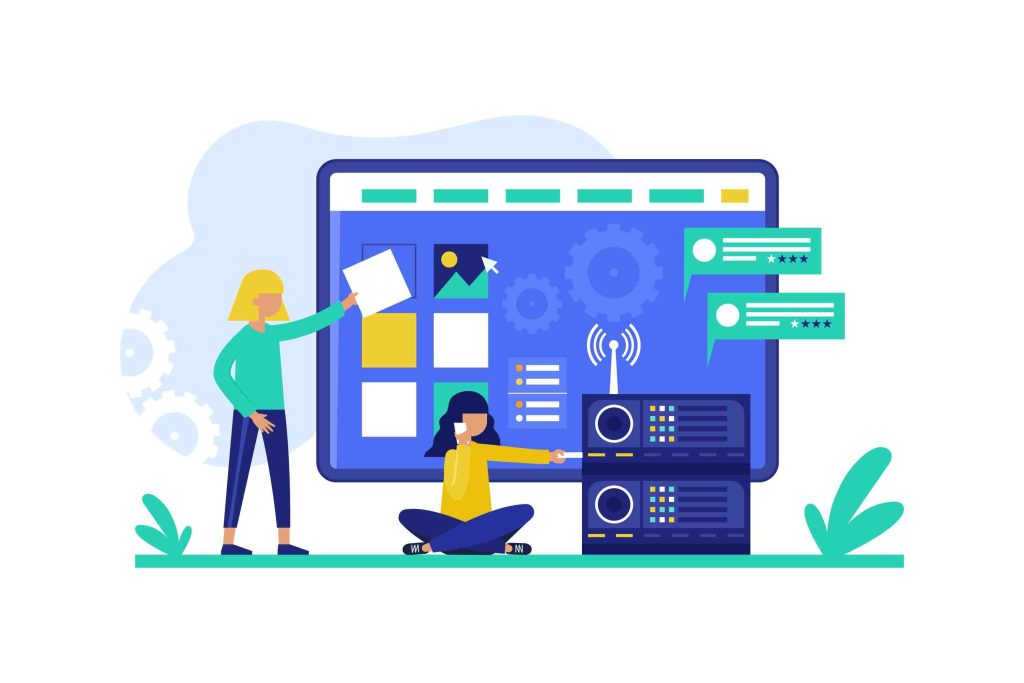
A tech stack is a group of databases, frameworks, and programming languages used to build websites or web pages.
A standard web development stack often consists of a combination of front-end and back-end technologies, such as:
- Framework: Code libraries created by different programmers. They can assist you in making a web application without the need to start from zero.
- Web servers/HTTP servers: The HTTP (Hypertext Transfer Protocol) server handles email queries, file downloads, and other requests.
- Databases: Data is stored and arranged in databases. Numerous methods exist for retrieving, modifying, updating, and managing the data.
- Programming languages: They convey instructions so that computers can interpret them easily.
- Operating systems (OS): Programmes that control a computer’s hardware, software, and additional programs or resources.
Numerous technological stacks are available for every development need, and the best stack for your project will be determined by its requirements. For example, if you require a high-performance website or web application to manage traffic and data, you’ll need a tech stack with solid back-end support.
Similarly, you would require a lightweight, easily-to-set-up tech stack to construct a website that needed to go live quickly but had limited functionality and resources (like a basic landing page).
Front-end tech Stack
All the content that a user sees is part of the front end, often known as the client side. The front end enables interaction with a web application via the tangible presentation layer.
The front-end’s components
- The Hypertext Markup Language, or HTML that oversees the displayed content’s organization with the use of tools like SASS,
- CSS (Cascading Style Sheets)—which specify the content’s style (presentation) (layout, colors, fonts, spacing—can be quickly created.
- JavaScript—integrates interaction into web applications through forms, animations, picture carousels, and other visual elements.
- AJAX stands for Asynchronous JavaScript and XML. It is used to update certain parts of a web application without having to reload the entire page.
- Frameworks, which provide standardized code packages that speed up development and add functional components. Bootstrap, Foundation, Semantic UI/UX Kit, and Stylus (for Node.js apps; more on later) are popular HTML and CSS frameworks.
- Similar to HTML and CSS, the JavaScript portion of the front end is typically created using front-end frameworks or libraries like Vue, Angular, or React. With the aid of JavaScript frameworks and tools, web developers may improve user experience and add even more interactive features to their products.
- JS frameworks significantly speed up the development process, but lightweight frameworks, such as Vue, are highly versatile and maintain high performance regardless of the back-end.
Back-end development technology stack
The back end, often known as the server side, oversees the logic that drives how a website functions. The back-end technology allows the client-side, server-side, and other back-end components to communicate.
This server-side software governs how the server-side application, database, and other components of a Web application structure communicate and interact. A Web app code can be expressed in words directly or using a back-end framework, which simplifies the development process. Each programming language includes several frameworks built upon it. The most popular include:
| Programming languages | Framework | ||
| PHP | Laravel | Symfony | Codelgniter |
| Python | Django | Flask | Tornado |
| Ruby | Ruby on Rails | Hanami | Sinatra |
| Js ( Node. js) | Nest.js | Express.js | Meteor.js |
| Scala | Play | Lift | Akka |
| Elixir | Phoenix Framework | Sugar | Nerves |
Essential technological stacks for web app development

Several technological stacks are routinely used in web development, each with their own benefits:
LAMP
LAMP is a traditional technological stack that runs popular websites such as Facebook, Wikipedia, and Tumblr. The LAMP stack contains Linux (OS), Apache (Server), MySQL (Database), PHP, Perl, Python (programming languages)
- Linux: It is the core of the LAMP stack, an open-source platform that developers like because it’s free and easy to customize. In comparison, Windows is a closed-source platform, meaning you have less influence over its functions. Linux also has a strong development community and comprehensive documentation.
- Apache: It is a multi-platform, open-source HTTP server capable of handling massive volumes of traffic and data. It is quick, secure, and dependable, having been around since 1996. Apache is modular and may be tweaked to improve performance as needed.
- MySQL: MySQL is a relational database management system (RDBMS), which means it stores and displays data in tabular format, with rows and columns. It’s open-source and straightforward to use. MySQL is scalable and capable of handling massive amounts of data, but its efficiency and speed may suffer when dealing with massive databases.
- PHP/Perl/Python: They are the most common programming languages for the LAMP stack. Within these languages, Python works with almost any server, is reasonably simple to learn, and has a diverse set of tools and frameworks available. Perl and Python are occasionally used instead of PHP.
MEAN
The MEAN stack is a JS web framework used to build sites such as YouTube, Netflix, and PayPal. It is an excellent technology stack for those familiar with JavaScript or wanting to accelerate their development process. The MEAN stack contains the following databases:
- MongoDB: It is an open-source database with JSON documents generated by the front-end framework (in this case, Angular.js) and processed by Express.js. MongoDB can store enormous amounts of data, allows quick data transfers between the client and server, and is cloud-compatible.
- Express.js: It is a minimalist back-end web framework built on the Node.js server. Express.js excels in URL routing and HTTP request processing. It gets JSON documents from the web framework, processes them, and stores them in MongoDB.
Moreover, MERN’s front-end framework uses React, a fast, scalable, open-source JavaScript toolkit. It provides a virtual DOM that allows easy manipulation of web page elements, but it is slightly slower than MEAN, which uses a native DOM.
React also employs a component-based framework, which makes it simple to reuse code across different portions of your program. Additionally , it is also quite simple to learn if you already know JavaScript.
MEVN
It uses Vue.Js, a JavaScript framework for creating user interfaces, as its front-end framework. It has created websites such as Alibaba, Behance, and GitLab.
The MEVN stack consists of:
- MongoDB: It is an open-source database that holds JSON documents generated by the front-end framework after processing with Express.js.
- Express.JS: Express is a back-end framework that runs on the Node.js server. It receives and processes documents from web frameworks before storing them in MongoDB.
- Vue.js: Vue.js offers a clear and easy-to-read syntax and is a progressive framework built on the MVVM architecture.
Django
It is a Python web development framework prioritizing speed, clean code, and organization. It’s popular among web developers because of its adaptable architecture and ease of usage, although it can be challenging to master. The Django software stack has been used to develop websites such as Instagram and Pinterest, though Pinterest has recently switched to Flask.
The Django stack will always include Django and Python, but the server and database you use will vary depending on your preferences.
An example of a Django technology stack include:
- Django (Web Framework)
- Python (Programming Language)
- Apache (Server)
- MySQL (Database)
Tips to choosing the right technology stack for Web App Development
Before choosing technology stack for your web application, consider the following tips
Project requirement
Understanding your project’s exact requirements is the first step. Consider the application’s features, performance requirements, and user experience. Real-time applications like messaging software or live streaming services may benefit from Node.js’ non-blocking, event-driven architecture.
Scalability
Scalability is critical for managing growth. Consider vertical scalability (upgrading existing infrastructure) and horizontal scalability (adding new computers). It is an essential feature of technologies such as Node.js and MongoDB.
Development Speed
The time it takes to design and deliver an application can be significant, particularly for startups. Frameworks like Ruby on Rails and Django include built-in functionality and adhere to norms that speed up development.
Cost and Budget
Budget constraints may influence your choice of technology stack. Open-source technologies like PHP and MySQL can cut costs, whereas proprietary technology may require license fees. Thus, consider the expense of employing developers who are knowledgeable in the chosen technologies.
Community & Support
A strong community and solid support can make development easier. Technologies with huge communities include substantial documentation, tutorials, and forums. For example, React and Angular have active communities that contribute much content.
Conclusion
Selecting the appropriate technology stack is critical to the success of your web application. You can make a well-informed choice that supports your objectives by carefully weighing the project needs, scalability, development speed, cost, and community supportiveness.
Whether you use a conventional stack like LAMP or a new one like MEAN or MERN, ensure it meets your project’s specific requirements to construct a solid, scalable, and maintainable online application.
FAQ
What is the stack in web development?
A technological stack for web development is a collection of technologies used to build and maintain a website or web application. In practice, this stack combines programming languages, frameworks, operating systems, database and server technologies, libraries, patterns, and other solutions and tools required to create a web product.
What technology stack works best for web development?
The ideal tech stack for web development is a collection of technologies specifically chosen for the project that satisfy its unique requirements. It is best to decide based on the recommendations of a web development firm you work with.


